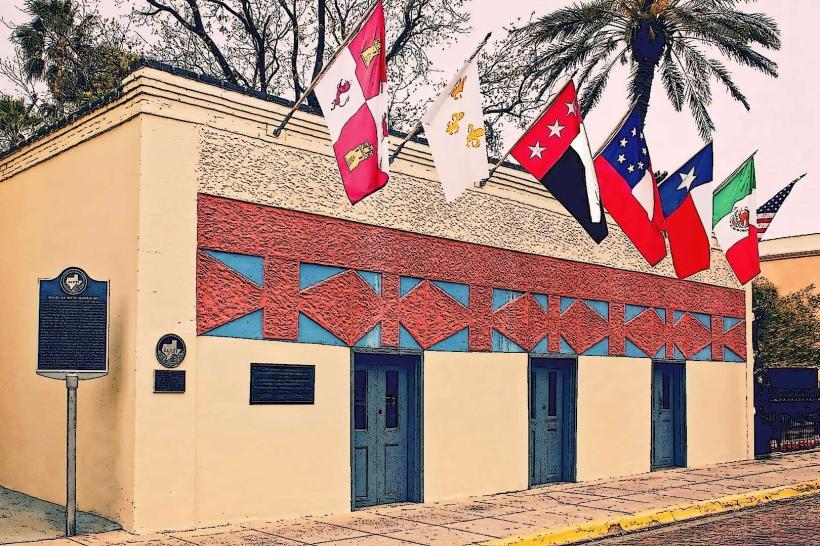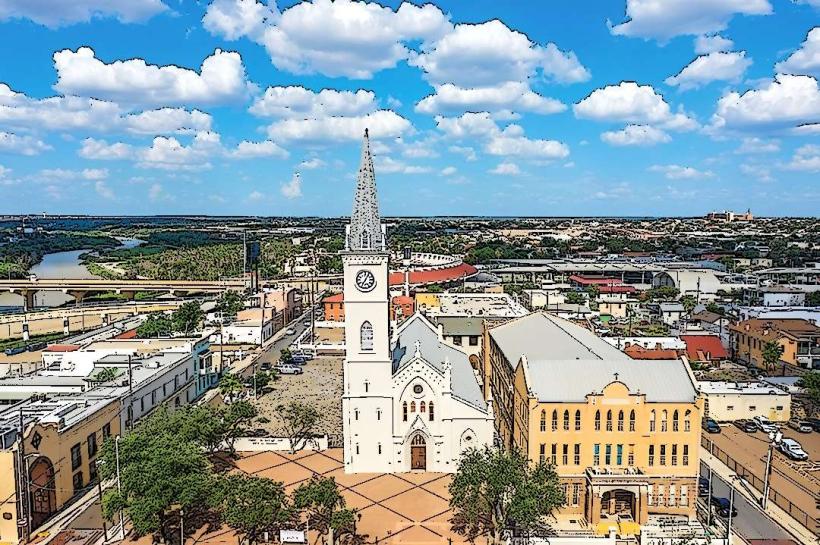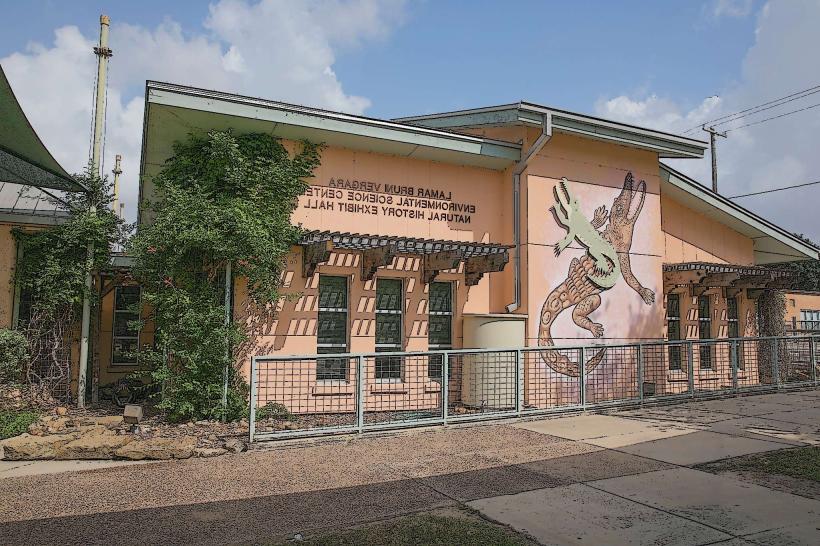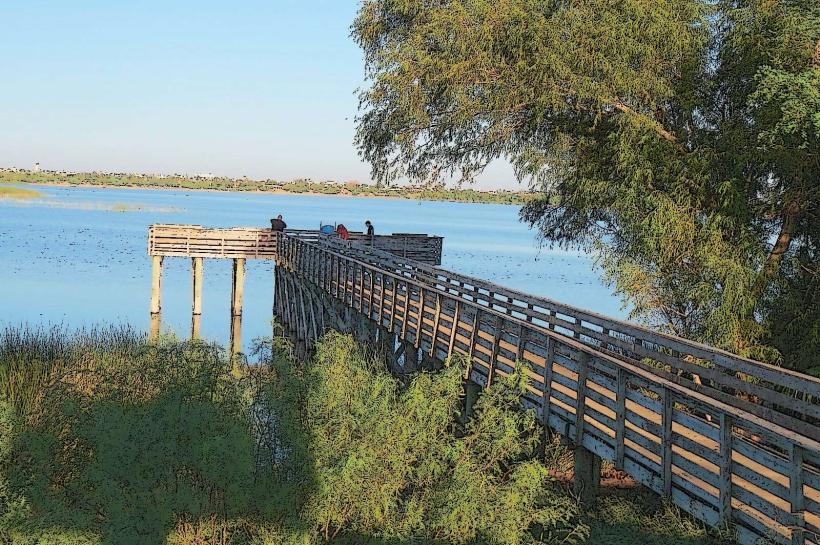Information
City: LaredoCountry: USA Texas
Continent: North America
Laredo, USA Texas, North America
Laredo is a historically rich and economically vital city located in South Texas, right on the U.S.–Mexico border. It is one of the oldest border settlements in the United States and has grown into a major trade and transportation hub due to its strategic location across from Nuevo Laredo in the Mexican state of Tamaulipas. Laredo’s identity is deeply influenced by its bicultural heritage, strong Hispanic roots, and a thriving international commerce economy driven by its status as the busiest inland port in the U.S.
Here is a detailed overview of Laredo:
1. Geographic and Strategic Location
Position: Located in Webb County, along the north bank of the Rio Grande.
Border Crossing: Opposite Nuevo Laredo, Mexico; connected via multiple international bridges.
Key Routes:
Interstate 35 (main corridor from Mexico to the Midwest U.S.).
U.S. Highway 59 (links to Houston).
U.S. Highway 83 (north to Abilene and south to Brownsville).
Landscape: Laredo lies in the South Texas Plains, a semi-arid region with brushlands and wide open spaces.
2. Historical Background
Founding: Established in 1755 by Spanish settlers as Villa de San Agustín de Laredo—one of the original settlements of Nuevo Santander.
Republic of the Rio Grande: Briefly served as the capital of a short-lived independent republic in 1840.
Annexation: Became part of the U.S. in 1848 after the Treaty of Guadalupe Hidalgo.
Legacy: Laredo has retained strong ties to its Mexican roots, evident in its architecture, language, customs, and festivals.
3. Demographics and Culture
Population: Over 255,000 residents (city), making it one of the largest cities on the U.S.–Mexico border.
Ethnicity: Over 95% Hispanic or Latino—one of the most Hispanic-majority cities in the United States.
Language: Spanish is widely spoken and often used in official and public settings alongside English.
Cultural Identity: Laredo blends Mexican and American traditions, resulting in a distinctive bicultural environment where mariachi, rodeo, Catholic traditions, and patriotic American holidays coexist.
4. Economy
Trade and Logistics: Laredo is the largest inland port in the United States in terms of trade volume.
Handles over 50% of U.S.–Mexico trade by truck.
Four international bridges handle commercial and passenger crossings.
Major industries include import/export logistics, warehousing, customs brokerage, and freight forwarding.
Top Employers:
U.S. Customs and Border Protection
Transportation and logistics companies (e.g., FedEx, UPS, J.B. Hunt)
Local government and education sectors
Oil & Energy: While not a drilling center, Laredo serves as a distribution point for oilfield equipment, especially for the Eagle Ford Shale region nearby.
5. Major Institutions and Education
Texas A&M International University (TAMIU):
A growing public university with programs in business, international relations, and health sciences.
Known for its bilingual environment and border-focused research.
Laredo College:
Offers technical and associate degrees, supporting workforce development.
Public Schools: Served by two districts—Laredo ISD and United ISD—each with large student populations and dual-language programs.
6. Transportation and Infrastructure
International Bridges:
Four vehicular bridges (e.g., World Trade Bridge, Gateway to the Americas).
One railroad bridge for freight.
Laredo International Airport:
Offers commercial flights, air cargo services, and private aviation.
Rail:
Major freight corridor for Union Pacific and Kansas City Southern (now merged into CPKC).
Highways:
Interstate 35 is the most crucial economic artery, connecting Laredo to San Antonio and the Midwest.
7. Climate
Type: Semi-arid (hot steppe climate).
Summers: Extremely hot and dry; average highs often exceed 100°F (38°C) in July and August.
Winters: Mild and short, with rare freezing temperatures.
Rainfall: Limited, mostly in late summer and early fall; flash flooding can occur.
Sunshine: Laredo receives abundant sunshine year-round.
8. Culture and Events
Washington’s Birthday Celebration (WBCA):
One of the largest and oldest patriotic festivals in the U.S., running since 1898.
Features parades, balls, concerts, and the historic Society of Martha Washington pageant.
Jalapeño Festival:
Part of the WBCA, with jalapeño eating contests, music, food, and rides.
Sister Cities Festival:
Showcases commerce and culture from Mexican cities across the border.
Laredo Energy Arena (LEA):
Hosts concerts, ice hockey, and large indoor events.
9. Museums and Attractions
Republic of the Rio Grande Museum:
Located in downtown's historic district, showcasing life in 19th-century Laredo.
Villa Antigua Border Heritage Museum:
Preserves local culture and architecture in a beautifully restored 20th-century mansion.
Imaginarium of South Texas:
An interactive children's museum focusing on science and creativity.
Lake Casa Blanca International State Park:
Offers fishing, boating, hiking, and picnicking in a natural setting close to the city.
10. Neighborhoods and Urban Life
Downtown: Features colonial architecture, historic churches, and international shopping. Strong cross-border commercial activity.
North Laredo: Rapidly growing with suburban developments, retail centers, and modern schools.
South and Central Laredo: Older parts of the city, rich in history and traditional character.
Housing: Generally affordable compared to most Texas cities, with high demand due to trade-related population growth.
11. Challenges and Opportunities
Border Security: While generally safe, immigration and drug trafficking issues affect public perception and federal presence.
Infrastructure Pressure: Trade growth puts strain on highways and bridges, prompting expansions.
Environmental Stress: Water scarcity from the Rio Grande and air quality are long-term concerns.
Opportunity Zones: Many areas qualify for federal investment programs to promote business and revitalization.
Conclusion
Laredo is a city like no other in Texas—a dynamic blend of American and Mexican heritage, driven by international commerce and sustained by deep historical roots. Its role as the most important inland port in the U.S. makes it essential to the North American economy. Culturally, it offers a living example of binational cooperation and coexistence. Whether through its festivals, bilingual education, or bustling bridges, Laredo embodies the spirit of the border with energy, resilience, and pride.







